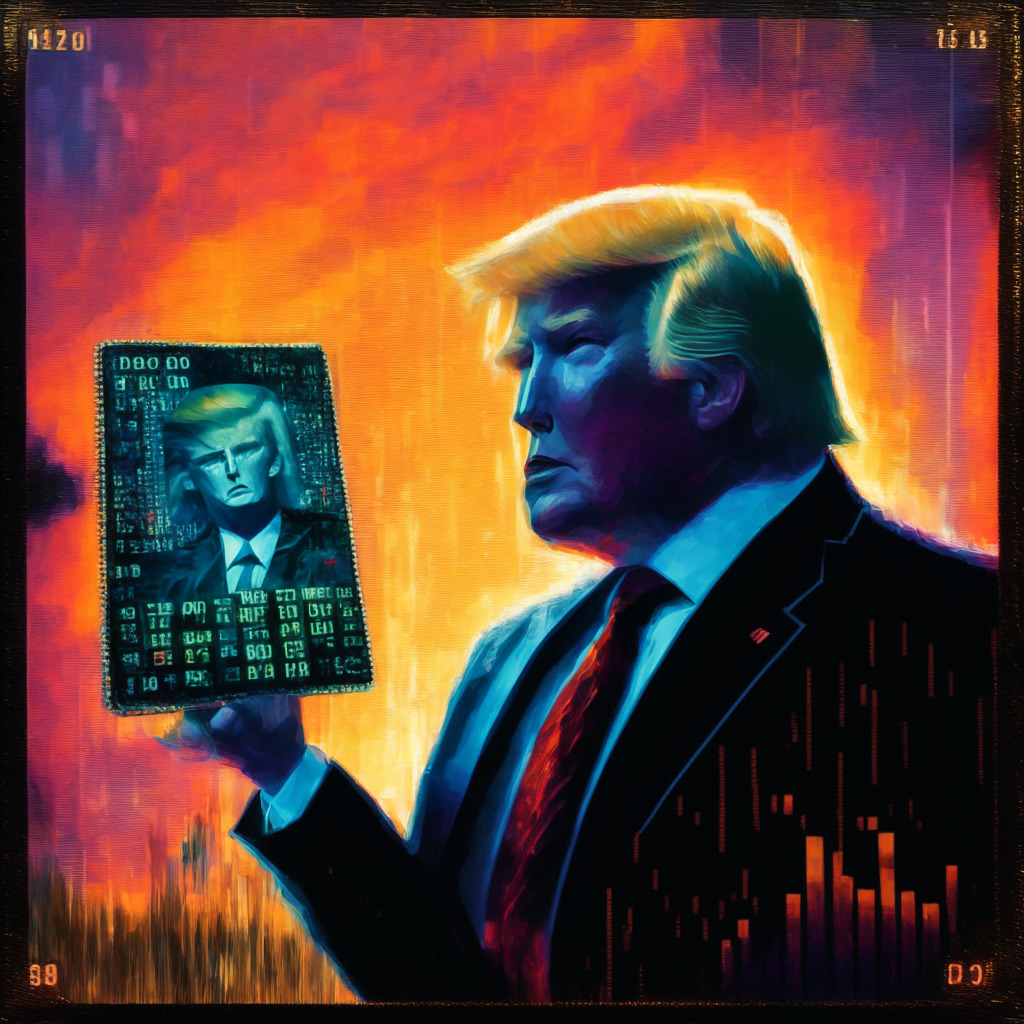The world of cryptocurrency recently witnessed an unexpected spike in the price of Non-fungible Tokens (NFTs) featuring the former United States President, Donald Trump. The surge occurred following the release of Trump’s mugshot as a part of his criminal case in Georgia, which added a novel flavour of intrigue in the crypto markets.
Arguably, an event of this nature indicates just how much politics and public figures can influence the cryptosphere. The Trump NFT prices saw a remarkable 62% increase from 0.138 to 0.224 ETH, soon after the photo became public. The value of these digital trading cards initially released in December 2022 represent not just the current high demand for NFTs, but also their potential for capitalising on real-world events and trends.
Meanwhile, the former US President is facing serious criminal charges from Georgia authorities for allegedly attempting to subvert the will of 2020 election voters. He was released on a $200,000 bond and has since faced multiple additional charges elsewhere.
Interestingly though, the former president who once expressed his lack of faith in cryptocurrencies, was revealed to hold more than $2.8 million in an Ethereum wallet. Trump is not alone in the political space to have shown interest in cryptocurrencies. Many politicians have either criticised or expressed support towards this new age economic system, contributing to fluctuations in the crypto world. Furthermore, the vivid variety of cryptocurrency-related memes based on Trump’s mugshot goes on to demonstrate how community sentiment and online humour also play a role in shaping the footprint of digital currencies.
On a different note, the United States Internal Revenue Service (IRS) has proposed regulations on the sale and exchange of digital assets by brokers. This move is an attempt to streamline tax filing and to ensure transparency. While such efforts may go on to provide a sense of security and order, they can also lead to apprehensions among some that believe that over-regulation can stifle the growth of the digital economy.
Ultimately, the cryptocurrency landscape is a continuously shifting one that is significantly moulded by public figures, legislation, and worldly events. How this space evolves in the future largely rests on how these factors continue to make their mark on this ever-expanding world, which in turn shapes the market trends of digital currencies.
Source: Cointelegraph




